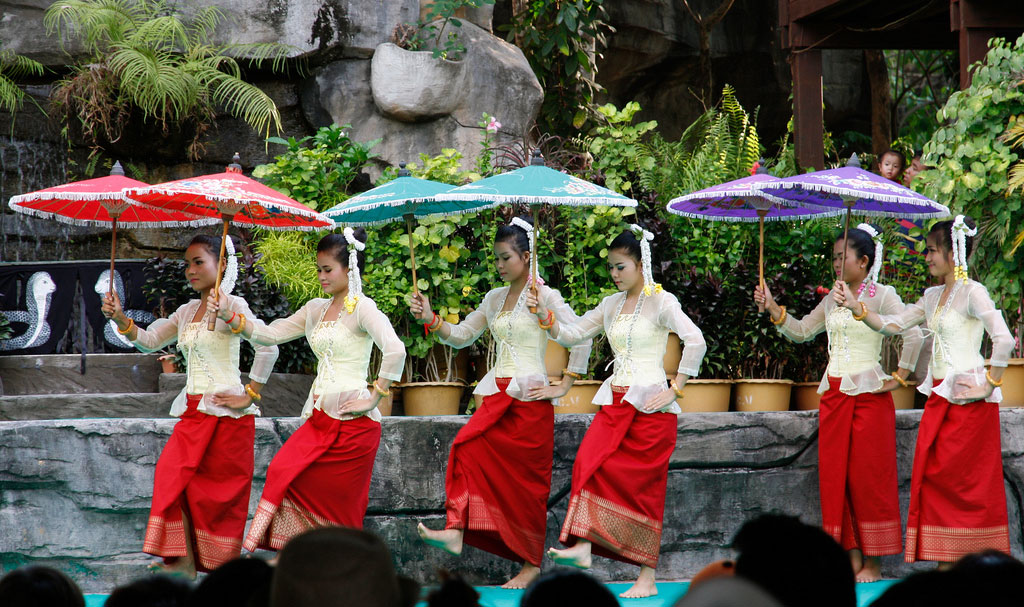For three days in mid-April, Choul Chnam, the Khmer New Year, celebrates the beginning of the Buddhist religion. The year 2016 is in fact 2559 in the Buddhist calendar.
Traditionally, people gather in their local temples to make offerings. The Khmer, like the Thais, enjoy throwing copious amounts of water and talcum powder at each other and at travelers during the three-day celebrations. Thousands of Cambodians head for the Angkor temples to celebrate, picnic, and sightsee. For many of the locals, it’s the first time they see the temples. Bear in mind that this is the most crowded time of year around the ruins.

Khmer New Year at the Cambodian Cultural Village in Siem Reap. Photo © Narin BI, licensed Creative Commons Attribution.
If you happen to be in Cambodia during the New Year holidays, Siem Reap and Phnom Penh are the best places to see the festivities.During the first day of the celebrations, Moha Songkran, the Khmer light incense at shrines and pray. In the morning they wash their faces, at lunch their chests, and in the evening their feet with blessed water in order to attract good luck for the coming year. On the second day of the celebrations, Wanabat, people give to charitable causes and pray for their ancestors at the local temple. On the third and final day of the celebrations, Tngai Laeung, people bathe the Buddha statues in the temples, which is thought to bring good luck and longevity. They also wash the hands of their parents or grandparents, a sign of respect for the authority of elders, in the hope of being blessed by their best wishes and to receive their advice.Angkor can be fun during the New Year, and foreign visitors have a chance to observe locals in the new pagodas around Angkor, such as at Wat Athvea, as they honor monks, bathe their Buddha statues, and even engage in water fights inside some of the prayer halls. If you happen to be in Cambodia during the New Year holidays, Siem Reap and Phnom Penh are the best places to see the festivities. In the countryside, visitors are likely to be invited to local celebrations. Prepare to get wet—and drunk.
Excerpted from the Second Edition of Moon Angkor Wat.